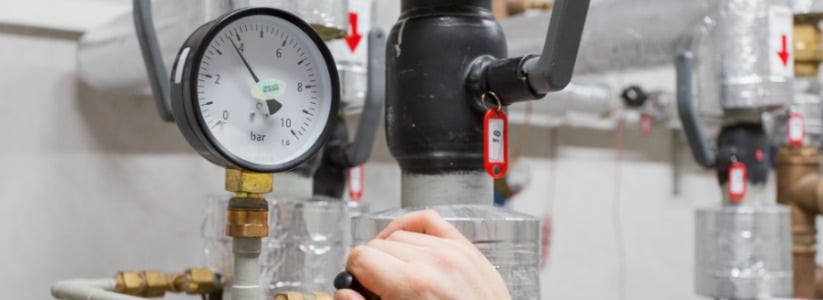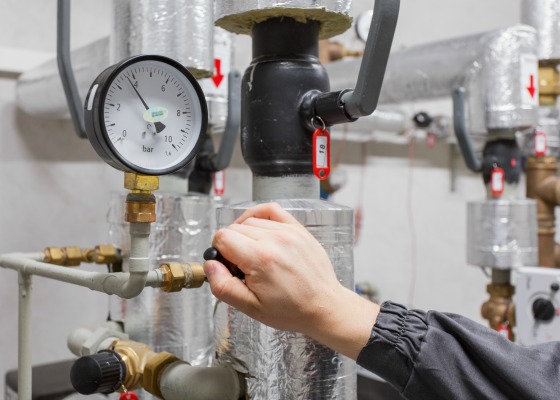Many building owners are challenged with either upgrading existing community heating systems or converting buildings with gas or electricity. It may still be the case that some residents remain wary and sceptical about community district heating schemes; especially when they will be contractually tied into one supplier.

This might be down to residents having had an unfortunate experience or having heard about the reputation of older, poorly designed and badly operated systems. With the government promoting fuel switch in the gas and electricity market, residents on community heating often feel tied in – this makes it really important for scheme operators to give them confidence that they are getting a fair deal.
Last year’s launch of the Heat Trust, the industry-led customer protection scheme, sets out key standards and guidance on how to prioritise residents at the centre of their scheme and hopefully helps alleviate many of their fears.
With recent advancements in technology and materials, and with further experience gained by operating systems at lower temperatures and with reduced heat losses; modern community heating systems are undoubtedly becoming more efficient and reliable. Nevertheless, the principal concerns of many residents remain: How much is it going to cost them? How do they pay? And how are they assured they get value for money?
Your life will be easier if the residents understand why the work is being carried out. This should be of course to reduce their costs and help the country meet the CO2 reduction commitments to decarbonise the UK.
Investing in resident confidence
At the forefront of getting residents on-board during the preliminary design stages of a project, scheme developers have focused on the need to be open and transparent when it comes down to educating them of the benefits of community heating. This can be achieved through active engagement with resident groups, newsletters and open days.
Upgrading or installing heating systems in occupied properties is always disruptive for the residents and strong coordination and good communication are both important. The up-front effort involved with discussing and developing a clear, understandable and realistic works’ programme with the residents, and then keeping them up to date with progress, is crucial. At Switch2, we do not underestimate the importance of a switched-on liaison officer in this process.
Put yourself in the resident’s shoes
Of course, when it comes to installing heat networks, residents are always going to be extremely concerned with how they and their properties will be affected – and the time the work will take. And if there are external works, will it also affect access to their properties?
By explaining regularly how the installation works are progressing, the residents will hopefully be provided with the information and notice period they need to arrange access and prepare work areas within their properties, which will then allow the installation works to be carried out more efficiently.
In return, installation engineers should carry out the work in a considerate manner, keeping areas as clean and tidy as possible, and then inform the resident of what happens next.
Ensuring a successful, smooth handover
This is where the ‘joined-up approach’, now an essential element of the CIBSE and ADE’s Code of Practice, will pay for itself.
Having completed the installation works, it is pivotal for the resident engagement not to stop there. Residents should receive a full tutorial of how they should use their new upgraded system to receive the best quality of heat and with guidance for setting the programmer to their own personal requirements to get the best out of the system. By teaching residents how to use their new controls, sets up an ideal conversation platform that can address any concerns that the resident may have over their new system and alleviates the need of hefty operating manuals that are invariably difficult to understand.
New billing and payment systems
Among the biggest worries for most residents is the amount of heat they will use, how much it is going to cost them and how they will pay for the energy they use. Residents may be used to the billing systems of the more traditional electricity and gas companies, or may have experience of unmetered community heating schemes.
However, the latest new, efficient heating schemes and the introduction of associated smart metering technology means the resident can be made fully aware of the benefits and flexibility of pay-as-you-go billing, with payment and top-up facilities available through a number of different ways, including by phone or direct debit.
Using the new controls to get the best out of the system
Experience has already shown that residents can make significant cost savings when they are put in charge of their heating systems and are made familiar with how the systems should be operated correctly.
Teaching residents how to use the system controls, preferably on a one-to-one basis, is therefore an essential requirement of both initial and ongoing commissioning activities.
How to address any concerns
If residents do experience any problems or complaints, they need to be able to have direct, easy access through reliable communication channels so that they can resolve their problems quickly and effectively and not lose faith in the system.
During the installation works, any problems or concerns can be discussed with the on-site team or, in the case of larger projects, with locally based Resident Liaison Officers. Thereafter, any future concerns can be addressed through Switch2’s UK customer service centre which has been set up to provide a complete billing, prepayment and administration service.
Operating manuals may be difficult to understand
Equipment and system operating manuals invariably contain so much detail that the resident inadvertently misses important information. This is not to say that these manuals should be eliminated or discarded, but sometimes even the best and most clearly written manuals are still often open to misinterpretation, especially when there is a language barrier.
Face-to-face detailed instruction and guidance will help the resident understand exactly what and what not to do, and importantly focus on ensuring that the system is used correctly.
Case study: Sheffield City District Heating Scheme
For one of the largest UK community schemes, the Sheffield City District Heating Scheme, which provides energy to 6,000 residential properties, Switch2 ensured a smooth and seamless project delivery by appointing locally based Resident Liaison Officers who were available to support customers with early engagement and throughout the process, for what could be considered for many, a very stressful time.
The RLOs were responsible for carrying out initial enquiries, organising resident meetings and door-to-door home visits prior to the installation works taking place, and at times to suit the residents (both in and out of normal working hours). They attended local resident meetings and set up ‘information days’ to explain the project works, enabling residents to have an important input into the process.
To meet the language diversity of Sheffield, information about the upgrade works was provided in different languages and also with the assistance of multilingual officers.
Key Takeaways:
- Residents need to be fully aware of the works at an early stage in the project
- Think about the practicalities and how the works will affect the residents
- Keep the residents updated of how the installation work is progressing and details of the next stage
- Residents who are happy operating their system will be more interested in ensuring the system is running efficiently – to the benefit of the wider community



